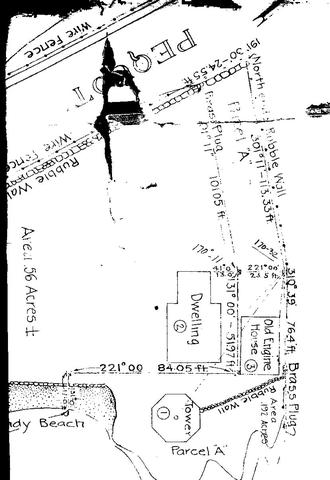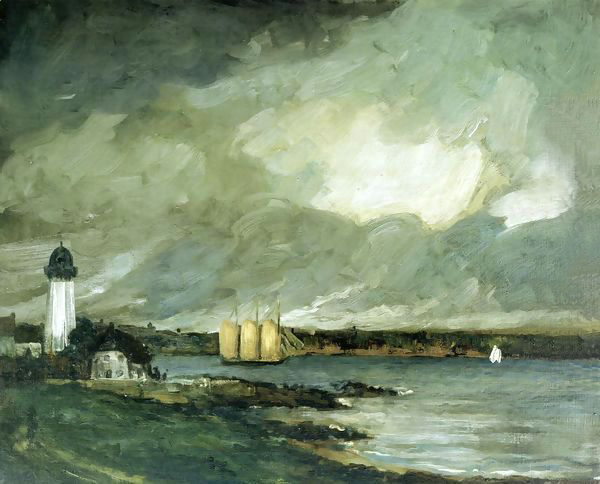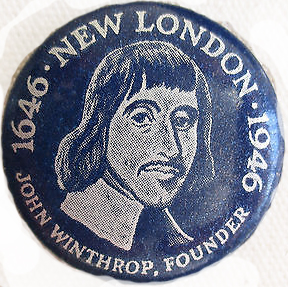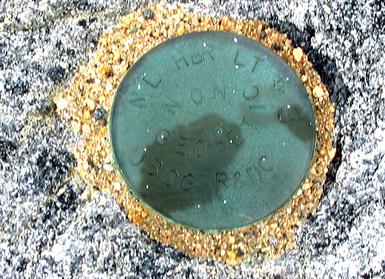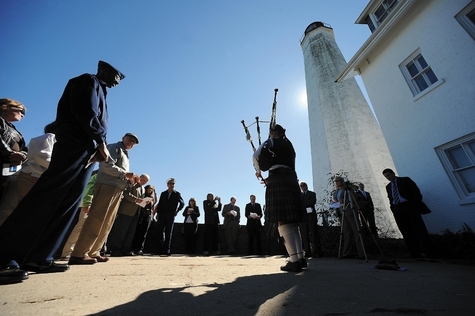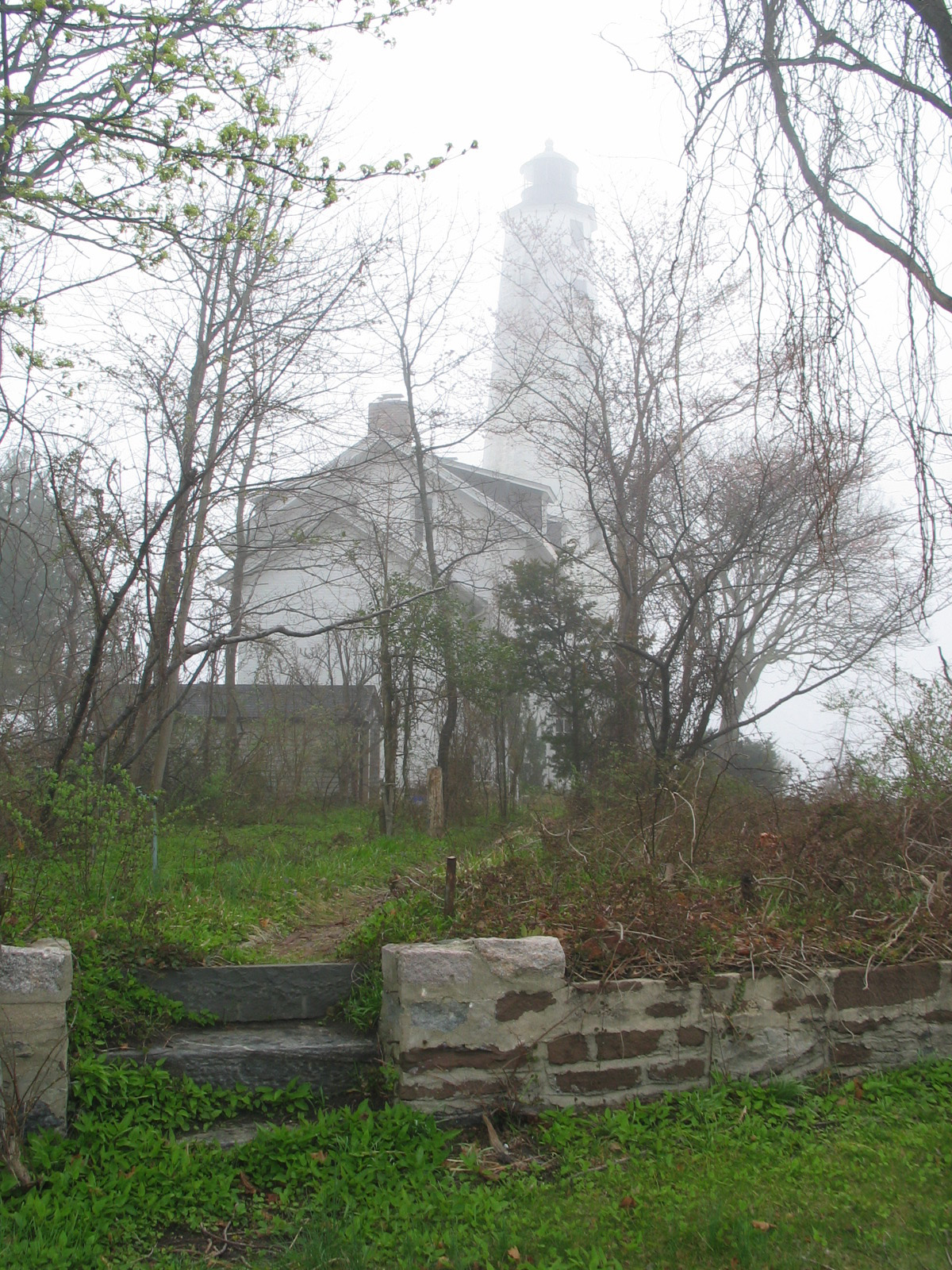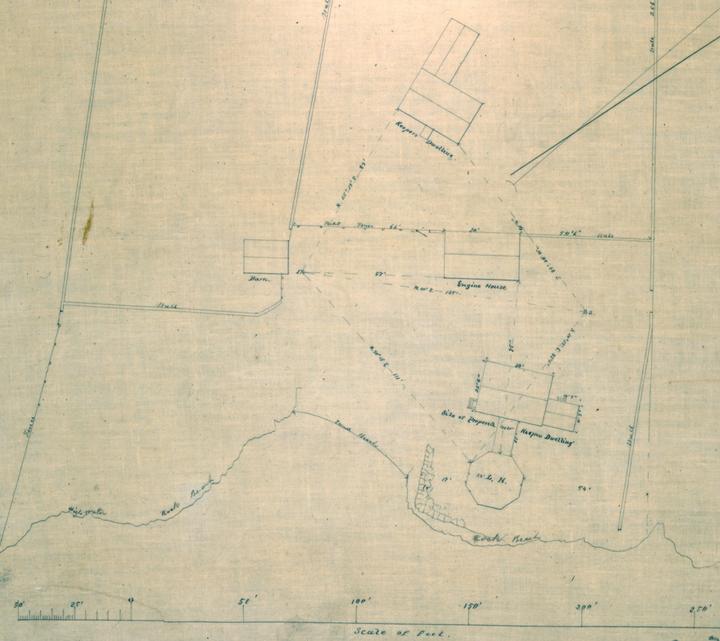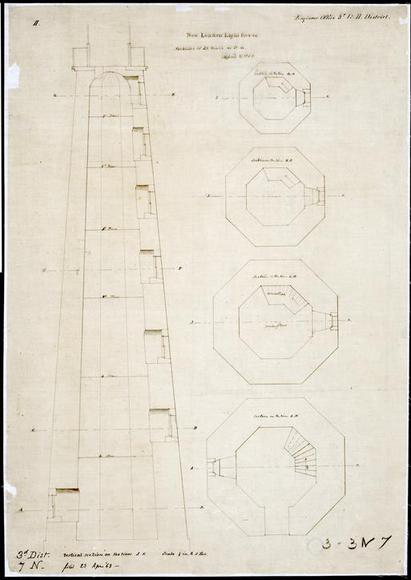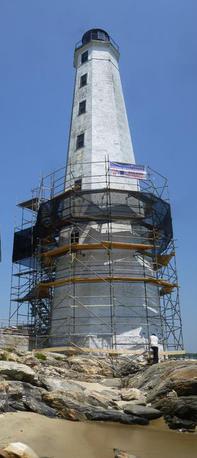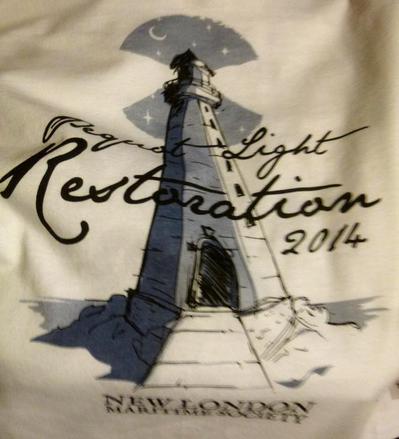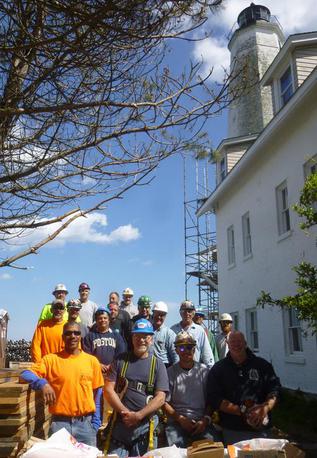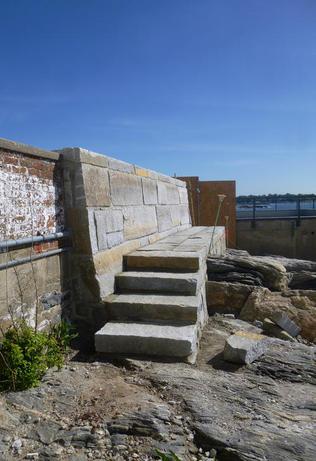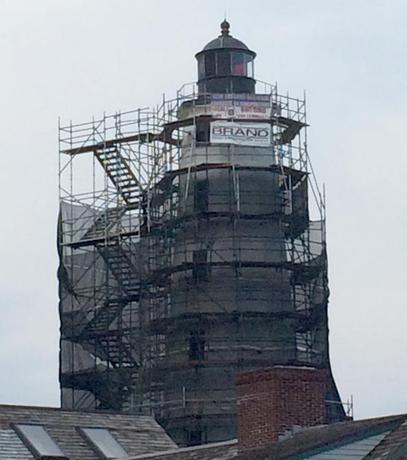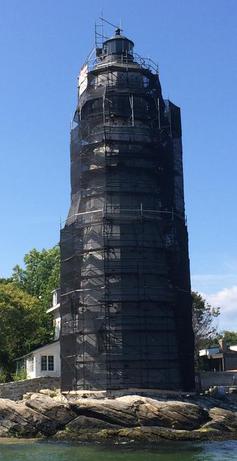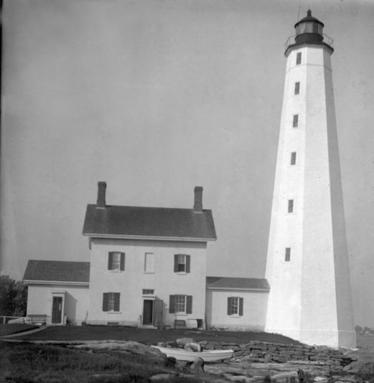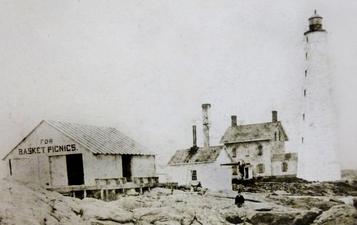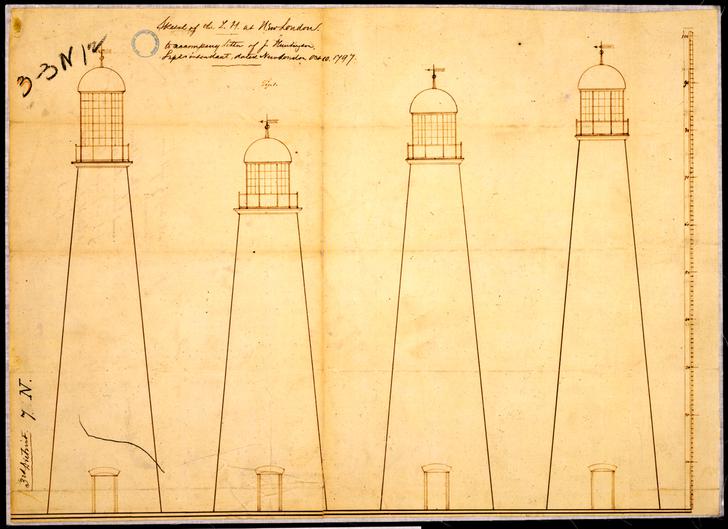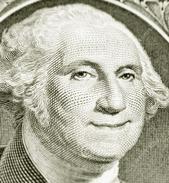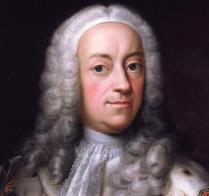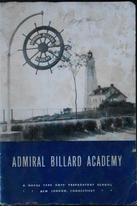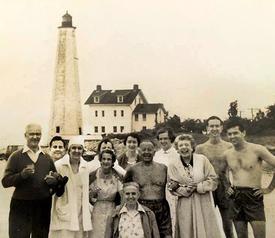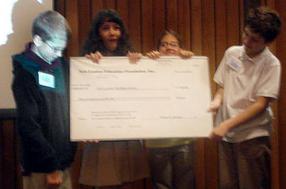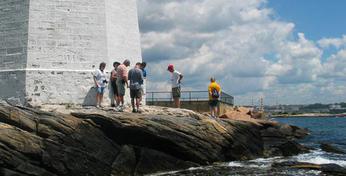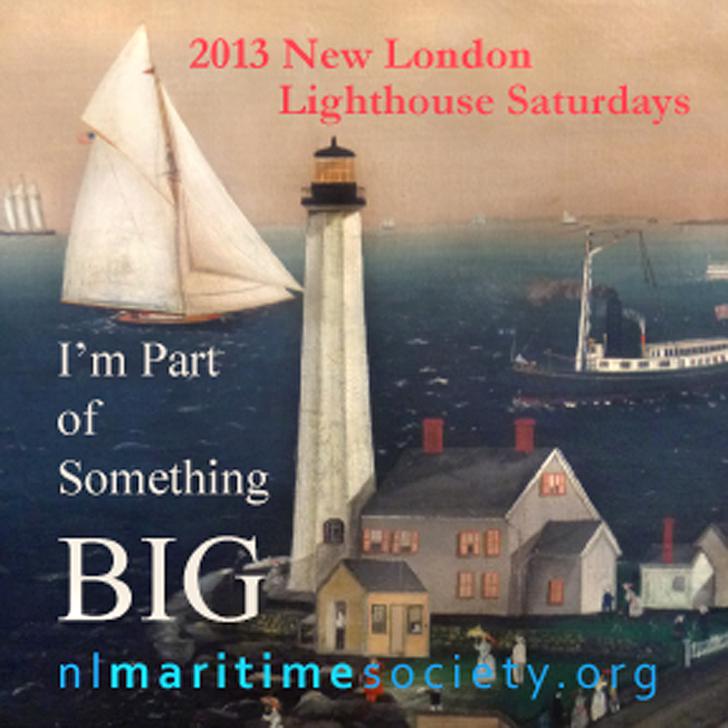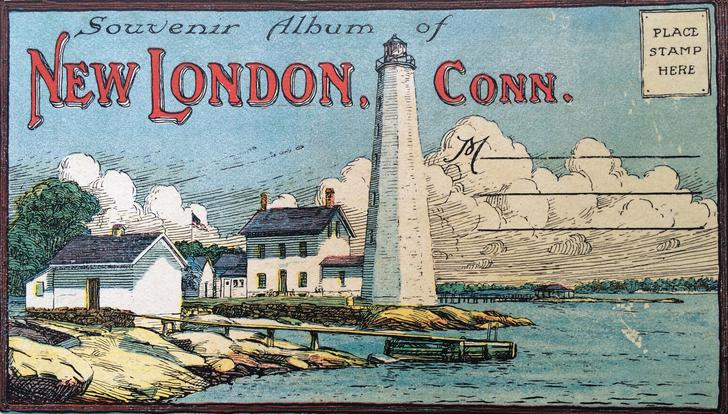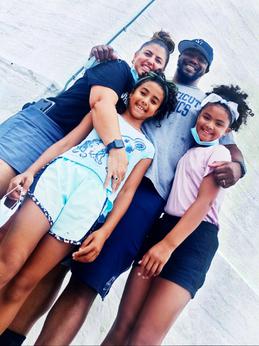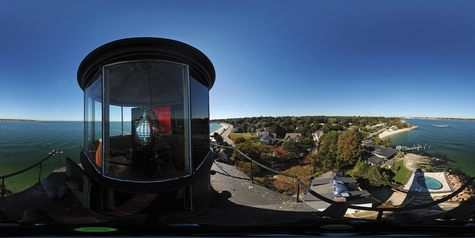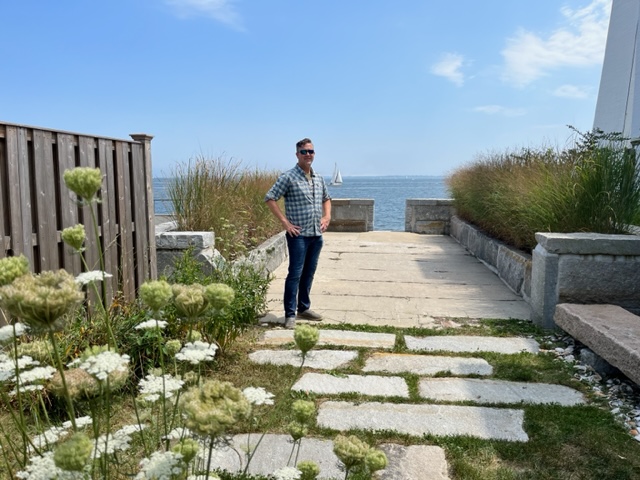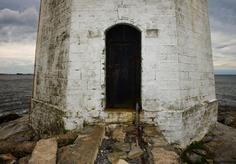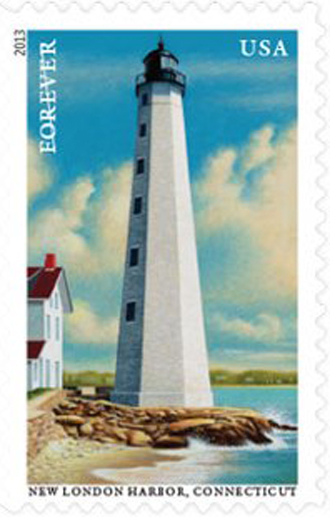A Brief Timeline
1646 - John Winthrop founds the first English settlement on the Thames River, in the Colony of Connecticut. That settlement, 'New London', has the best deep natural harbor between Boston and New York.
1715 - a lighthouse is built off Boston, the first in the north American colonies.
1730s - New London's first 'beacon' is established at Harris Point on the west bank of the 'Harbour's Mouth', (where the Thames River meets Long Island Sound). The 'beacon' was, in fact, a bonfire occasionally lit to provide warning against an approach by the French fleet.
1754 - a damaged Spanish vessel enroute from West Indies to Spain, and laden with gold, silver, indigo and other products, put into New London for emergency repairs. The ship ran aground at Bartlett's Reef. Its heavy cargo had to be removed to free the ship from the rocks. Held in storage, when it finally came time to return the treasure, a significant amount of the gold, silver and indigo had.... gone missing! This incident made people aware of the urgent need for a lighthouse: to guide ships away from the rocks and into New London harbor.
1759 - under King George II, land is purchased to establish a true lighthouse. The colonial legislature of Connecticut sells lottery tickets to raise funds to build the new station. New London resident Nathaniel Shaw sells a portion of his land for the site of the new light.
1761 - Harbor Lighthouse is constructed at a cost of £715, (roughly $285,000. It is the first lighthouse built on Long Island Sound. The 64-foot-tall hammer-dressed stone tower with a wooden lantern was first lit the night of November 7, 1761. Lighthouses, like forts, were considered part of the coastal defense system.
1765--1783 - The American Revolutionary War
1789 - The United States Lighthouse Establishment is created under the U..S. Treasury, and local administration of lighthouses is handled by U.S. Customs agents. Harbor Light becomes the fourth of the original 12 colonial lights that the young United States government manages under its newly established Lighthouse Board.
1790 - Harbor lighthouse is ceded to the United States, according to the Memoranda of Cessions by Connecticut.
1791 - George Washington, himself, signs a contract authorizing the expenditure of $360 quarterly to supply New London Harbor Light's six lamps with spermaceti whale oil, with the Act for the Establishment and support of Lighthouse, Beacons, Buoys, and Public Piers.
1800 - By 1800, the lighthouse had developed a 10-foot crack beneath the lantern, and the lamp's low focal point left it indistinguishable from lights in nearby farmhouses. Congress appropriates $15,700 "for rebuilding, altering, and improving the lighthouse at New London, Conn."
1801 - Architect Abisha Woodward of New London completes construction of the new (current) lighthouse, an 89-foot tapered octagonal tower with 19-inch-thick walls at the base. Originally left unpainted, the tower is whitewashed some time in the mid-19th century. It is the oldest and tallest lighthouse on Long Island Sound. Woodward previously had designed Bald Head Lighthouse, at Cape Fear, NC (1794), and subsequently the Lynd Point Lighthouse, in Old Saybrook, CT, and Faulkner’s Island Light in Guilford, CT, both in 1802; Five Mile Point Lighthouse in New Haven, CT, and Little Gull Light in Southold, NY, in 1805; and Black Rock Harbor Lighthouse in Bridgeport, CT, in 1808 -- all in the 'federal octagonal' style. Only Woodward's NL Harbor and Faulkner's Lights remain today.
Harbor Light is one of the earliest American lighthouses with a flashing light; a revolving eclipser made the light flash - 3 seconds on, three seconds off - so it couldn't be confused with the steady lights of nearby farms.
1812 - during the War of 1812, at the request of Commodore Decatur, New Londoners put out the lighthouse lamp so that British ships can not use it to navigate the harbor.
1816 - The tower is fitted with the Winslow Lewis patent lamp and reflectors, becoming one of the last in the United States to upgrade.
1833 - After three decades, NL lighthouse needs extensive repair. Charles H. Smith is contracted to furnish a new stone deck, lay on a brick arch, and supply a new lantern surrounded with two Iron rails, a new copper dome and vane, a new flight of wood stairs, and a new outer door and lock.
This same year, New London's US Customs House, designed by Robt. Mills, is built. Near its height as a whaling port, over 30 ships and 900 men from New London were employed in whaling.
1838 - Lt. George M. Bache, U.S.N., reports on the light: It is of great importance as a leading light for vessels going in and out of the harbor of New London, which, on account of its security, is much resorted to during the heavy gales of winter.
1855 - a fourth-order Fresnel lens to illuminate 315 degrees is recommended. The lens is installed in 1857 and remains in use to this day. A 'red sector' warns boats of rocks near shore. About this time, the foghorn is invented.
1863 - the tower's cast-iron circular stair and lantern are added at about this time and new dwellings (the current house) for the lighthouse keepers are built.
1868 - a road (Pequot Avenue) is opened by the city of New London across the lighthouse grounds.
1874 - Celadon Leeds Daboll, of New London, experiments with fog horn designs in the 'engine house' at the site. A second-class fog signal with two 18-inch engines and a Daboll trumpet is installed. It was in operation 553 hours during 1875.
1881 - Harbor Lighthouse souvenir items become popular: plates, cream pitchers, spoons, postcards. In many cases, these items are sold to visitors by the lighthouse keepers. U.S. Lighthouse Service instructions to lighthouse keepers state:
Keepers must be courteous and polite to all visitors...and show them everything of interest about the station.
Fresnel lenses are considered an ultimate expression of art, science, and technology. Tourists world-wide visit lighthouses to see the lenses and partake in the lantern views. 'Basket Picnics' are offered at Harbor Light for steamboat day-trippers.
1883 - a first-class Daboll fog trumpet is installed.
1896 - an improved fog signal consisting of two 3 1/2-horsepower Hornsby-Akroydoil engines, air compressors etc., is installed operating the first-class Daboll trumpet.
1902 - Development spreads out along Pequot Avenue. Trees are planted by the Olmsted firm as part of the site development for the Guthrie mansion (later Lighthouse Inn).
1903 - a fog-signal house is built in and 13-horse power oil engines, with trumpet, siren etc., installed the following year.
1904 - An article by Arthur Hewitt describes a visit: The keeper [Charles B. Field], a Swede (possibly show left), was a very intelligent man... When we were in the tower talking of fog, he told me how one night, when he was operating the horn, and 'the fog was so thick yer could have cut it with a knife and it fairly stuck in yer throat,' (from: New England Lighthouses: A Virtual Guide)
1910 - The U.S. Lighthouse Service is created to oversee American lighthouses.
1911 - As a result of complaints by summer residents, and despite protests by local watermen, the fog signal is discontinued at Harbor Light and moved off-shore to the new New London Ledge Light (first lit in 1909).
(In Long Day's Journey into Night, a drama written by New London-born playwright Eugene O'Neill and set in a home on Pequot Avenue at about this time, the mother complains about the mournful sound of the fog horn.)
1912 - the Harbor Light station is automated when the light is changed to acetylene. It is soon switched to electricity. A lighthouse keeper is no longer necessary.
1929 - the lighthouse grounds are divided and the keeper's house sold to a private party. The United States retains ownership of the lighthouse and a strip of land running from the former Engine House (where Daboll tested his fog horns) and Pequot Avenue.
1939 - the U.S. Lighthouse Service merges with the U.S. Coast Guard. While most lighthouses are now automated, the USCG still oversees American lighthouses, including maintaining the lantern at Harbor Light.
1944 - Harbor lighthouse is featured on the cover of the Admiral Billard Academy program. The Admiral Billard Academy borders the lighthouse to the north where the beach is still known as Billard Beach.
1945 - Anne Collier's family visits at Harbor Light.
1990 - Harbor Light is listed on the National Register, reference #89001470.
2002 - Harbor Light is put up for adoption by the federal government. NLMS submits its application for ownership.
2009 - through the National Historic Lighthouse Preservation Act of 2000, New London Maritime Society becomes owners of New London Harbor Light.
2010 - The formal conveyance ceremony takes place in October.
NLMS starts the Lighthouse Kids education program with the NL Public Schools (2010-2013).
NLMS commissions a building conditions survey. Work on a land survey and dock research begins.
The US Coast Guard continues to operate the lighthouse as an active aid to navigation.
2011 - the 250th anniversary of Harbor Light.
NL SEMI students donate $1,000 to the lighthouse at the 250th birthday party.
NLMS's first Sentinels on the Sound Lighthouse Weekend is held. These celebrations have continued every summer since!
2012 - Super Storm Sandy hits. Harbor Light's walls are damaged and the walkway to the lighthouse is washed out.
2013 - New London Harbor Light represents Connecticut on the US Postal Service's Lighthouses of New England stamp series.
NLMS received FEMA aid to replace the stone walls and walk.
NLMS announces a campaign 'I'm Part of Something BIG' to restore/repaint the lighthouse (projects as a 4-year campaign).
Within 24 hours of the announcement, the local carpenters and painters unions and Brand Scaffolding donate $500,000+ in in-kind labor and materials.
The community donates another $125,000.
Both the fund-raising and lighthouse restoration are completed within 18 months.
2014 - Harbor Light undergoes its exterior restoration, directed by Loring & Son Masonry. Work is completed in October.
(At this point, a series of unfortunate events begins to unfold; NLMS is sued by a neighbor with the result that by July 2015 all access to Harbor Light by the public is suspended.)
2015 - NLMS receives a $125,000 state 'Good to Great' grant to replace the historic dock at Harbor Light. We subsequently lose the grant due to the ongoing lawsuit.
2016 - Harbor Light is featured on the CT Fish & Wildlife Service duck stamp.
NLMS organizes and hosts a first LIS lighthouse symposium.
2017 - NLMS works with the City, P&Z, and lighthouse neighbors to reestablish the public's right to visit this beloved historic landmark. It does not work out. The lawsuit continues.
NLMS organizes and hosts a 2nd LIS lighthouse symposium.
2018 - In December, NLMS wins the right to restore public tours at Harbor Lighthouse.
2019 - In March, the New London Planning & Zoning Committee sets guidelines for public visitation and the tours commence.
The first public tour took place on March 15, 2019.
The very next day, NL P&Z & NLMS were sued by the three immediate lighthouse neighbors. However, for now, we are allowed to bring the public to tour the lighthouse. The lawsuit should be resolved by the end of 2020.
In November, NLMS organizes and hosts a third LIS lighthouse symposium.
2020 - NLMS receives a $60,000 'Good to Great' grant to landscape the lighthouse grounds.
According to the USCG, from the top of New London Harbor Light, one can see more lighthouses than from any other place on earth.
USCG description of the light: The lighthouse is a white, octagonal pyramidal tower, 90 feet above ground and 89 feet above water, the light being visible for 15 miles, and located on the west side of the entrance to New London Harbor. The light is a 6,000-candlepower fourth-order electric light flashing white every 4 seconds, with a red 1,300-candlepower sector from 0 degrees to 41 degrees, covering Sarah Ledge and the shoals to the westward.
We thank John T Phillips II for his research on the colonial history of the lighthouse, the New London Country Historical Society for the Shaw family information, and the USCG for the details about the 19th century especially about various fog horns.
Read about the light in Connecticut Explored.
Learn more about the history at New England Lighthouses.
July 1-3, 2011 we held our first Celebration of New London's Lighthouse Heritage
In 2024, thanks to a generous donation from Louise Novitch, we installed this beautiful cedar gate at Harbor Light.
Tours inside Harbor Lighthouse take place year-round.
To find out more, and to register, go to https://www.brownpapertickets.com/event/6489632
In 2025, thanks to a grant from Veolia/NL Water Authority, New London residents may tour the lighthouse with a $5 ticket!
Abisha Woodward was a contractor from New London, Connecticut, evidently a man of many talents. In 1793, he won a federal contract to complete the original Bald Head Island Light at Cape Fear, North Carolina. The state of North Carolina had begun work on this lighthouse before the new federal government assumed control of aids to navigation in 1789, and the tower was well advanced in construction when Woodward arrived on the scene. It's not his fault that the lighthouse was built too close to the shore and had to be torn down in 1813.
In 1799 a large crack developed in the wooden lighthouse at New London Harbor in Woodward's home town, and he was selected to build a stone replacement. The 89-foot tower Woodward completed in 1801 continues to shine today. The lantern has held a fourth order Fresnel lens since 1857. In many respects it shows a rather strong resemblance to the Cape Henry Light; this resemblance reflects the federal specifications, which described in detail the form and shape of the tower. Like McComb's lighthouses, Woodward's towers show robust design and careful and sturdy workmanship.
In 1802, Woodward built a second stone tower, about half the height of the New London lighthouse, at Faulkner's Island off the Connecticut coast. This tower looks very much like the upper half of the New London tower.
What are some interesting facts about lighthouses? from the USCG
First lighthouse - Boston, MA (1716)
Oldest original lighthouse in service - Sandy Hook, NJ (1764)
Newest shoreside lighthouse - Charleston, SC (1962)
Only triangular-shaped lighthouse tower - Charleston, SC (1962)
Only lighthouse equipped with an elevator - Charleston, SC (1962)
Tallest lighthouse - Cape Hatteras, NC (191 ft)
First American-built West Coast lighthouse - Alcatraz Lighthouse (1854)
First lighthouse to use electricity - Statue of Liberty (1886)
First Great Lakes lighthouses - Buffalo, NY & Erie, PA (1818)
Most expensive lighthouse (adjusted cost) - St. George’s Reef, CA (1891)
First lighthouse built completely by the Federal Government - Montauk Point, NY (1797)
Founding of the U.S. Lighthouse Service - 7 August 1789
U.S. Lighthouse Service merged with the Coast Guard - 7 July 1939
Second most powerful lighthouse in the world (and most powerful in the Western Hemisphere) - Charleston, SC (1962)
In March, 2012, the French Musee national de Marine opened a magnificent exhibition: PHARES -- Lighthouses. If you don't plan to be in Paris before the show ends on November 4, visit the Frank L. McGuire Maritime Research Library at the Custom House Maritime Museum to see the exhibition catalog.
Lighthouse Links
The US Life Saving Service Heritage Association (USLSSHA) is an organization dedicated to preserving the history of the US Life Saving Service and early US Coast Guard.
U.S. Lighthouse Society - Lighthouse Patent Models in the Smithsonian Institution
Our 2014 Lighthouse Sponsors
The New London Community
The Chester Kitchings Family Foundation
Frank Loomis Palmer Fund
Veolia Water / New London Water Authority
Loring & Son Masonry
Surveyor Jim Bernardo
Hefel Masonry LLC
Captain Scott's Lobster Dock
Ocean Beach Park
The Big House B&B
Cristifori Foundation
CTrides/Shore Line East
New England Regional Council of Carpenters
John Mock
Dave Fallon
David Lersch
Fishers Island Ferry
Cross Sound Ferry
Dominion Foundation
A. W. Marina
Manafort Bros., Inc
BRAND Energy & Infrastructure Services
Poor Morgan
Captain's Pizza
Dept of Eco. Dev. State Dept. of Tourism
Kenseal Building Products
H.Carr & Son
Chelsea Groton Bank
Associated Lightning Rod Company
Rogovin Moving and Storage
Shennecossett Yacht Club
LLL Foundation
IUPAT - The International Union Of Painters And Allied Trades Home, Local 1122
Central and Eastern Connecticut Carpenters Local 24
the Eschenfelder Family
Robinson+Cole.
NL Harbor Light Lighthouse Keepers, from USLHS
Nathaniel Shaw Principal Lighthouse Keeper (1761-at least 1771)
Griswold Harris Principal Lighthouse Keeper (1811-1826) father of Jeremiah
Jeremiah Harris Principal Lighthouse Keeper (1826-1831)
Sauton J. Beckwith Principal Lighthouse Keeper (1831-1832)
John G. Munn Principal Lighthouse Keeper (1832-1841)
John Mason, Jr. Principal Lighthouse Keeper (1841)
John Mason, Sr. Principal Lighthouse Keeper (1841-1844)
Nathan Buddington Principal Lighthouse Keeper (1844-1845)
George K. Comstock Principal Lighthouse Keeper (1845-1850)
John Mason Principal Lighthouse Keeper (1850-1853)
Thomas Fisk Principal Lighthouse Keeper (1850- )
Lyman Reed Principal Lighthouse Keeper (1853-1859)
Elijah Bolles Principal Lighthouse Keeper (1859-1861)
Philip M. Boss Principal Lighthouse Keeper (1861-1869)
Charles A. Bunnell Principal Lighthouse Keeper (1869-1889)
Henry A. Whaley Principal Lighthouse Keeper (1889-1889)
Charles B. Field Principal Lighthouse Keeper (1889-1910)
Theodore DeShong Principal Lighthouse Keeper (1910-1911)
Joseph F. Woods Principal Lighthouse Keeper (1911-1912)
Daniel Harris Principal Lighthouse Keeper (at least 1775-at least 1802)
Jeremiah Harris Principal Lighthouse Keeper (at least 1827-1831)
Charles A. Bunnell 1st Assistant Lighthouse Keeper (1872-1890)
George L. Potter 1st Assistant Lighthouse Keeper (1890-1895)
Joseph D. Burke 1st Assistant Lighthouse Keeper (1895-1899)
Elmer J. Rathbun 1st Assistant Lighthouse Keeper (1899-1909)
John J. Price 1st Assistant Lighthouse Keeper (1909-1910)
Joseph F. Woods 1st Assistant Lighthouse Keeper (1911-1911)
William B. Gilman 1st Assistant Lighthouse Keeper (1911-1911)
The US Coast Guard continues to operate the lighthouse as an active aid to navigation. Meanwhile, New London Harbor Light is open to the public, by appointment, on a strictly limited basis. Please call 860-447-2501 to make inquiries.
According to the USCG, for the top of New London Harbor Light, one can see more lighthouses than from any other place on earth. From the top of the lighthouse, it is possible to see at least seven other lighthouses: New London Ledge, Race Rock, Little Gull Island, Plum Island, Little Dumpling, Montauk, and Avery Point.
New London Harbor Light Fund
New London Maritime Society
150 Bank Street, New London, CT 06320
860-447-2501, [email protected]
LISTED on the National Register
Reference #89001470. Year Listed: 1990
Tours to climb HARBOR LIGHTHOUSE run year-round. The views at the top are spectacular! We meet at the lighthouse, then climb 116 steps to the lantern room – all the while learning about the 264-year history of Harbor Light, the oldest and the tallest lighthouse on Long Island Sound. Sign up online at https://www.brownpapertickets.com/event/6489632 or send an email to schedule your custom tour: [email protected]
Photo, above: Dana Jensen for The Day, on the occasion of the conveyance of Harbor Light to the New London Maritime Society, October, 2010.
